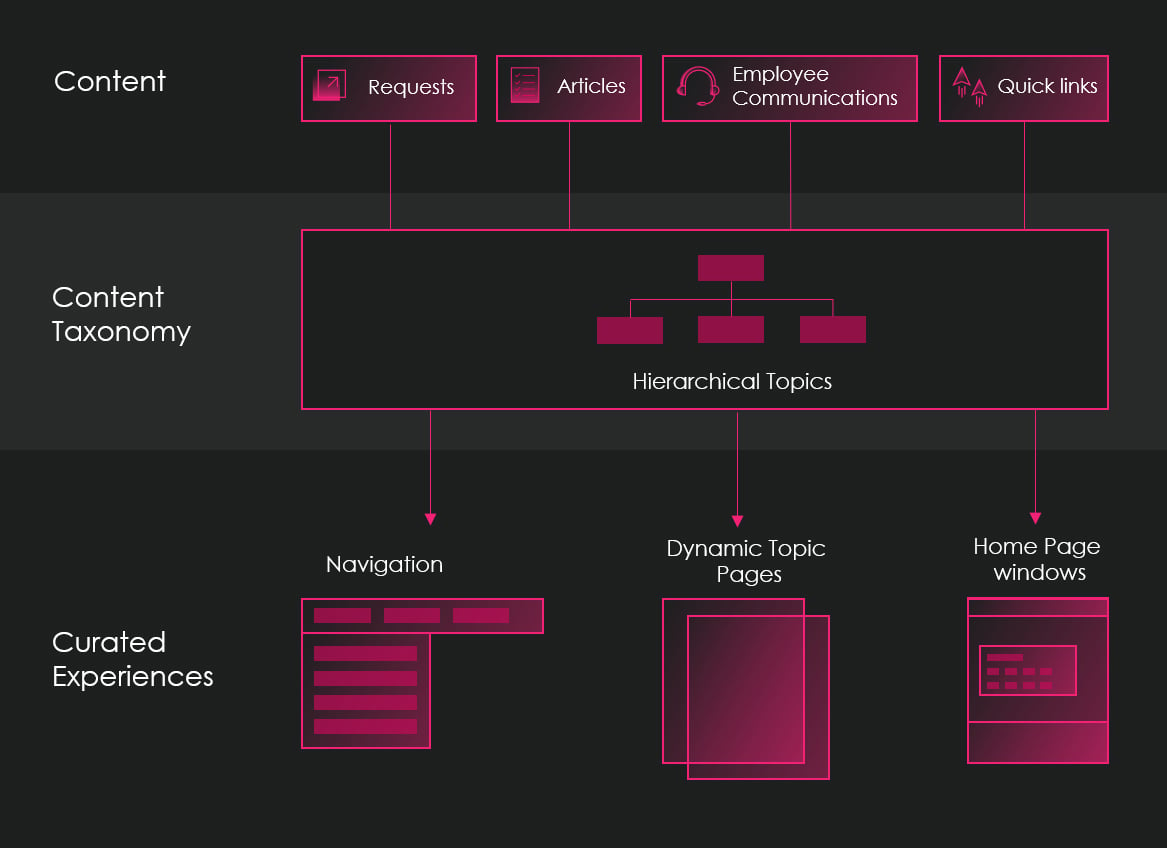HFS Research Podcast: The Next Wave with Bill...
Bill McDermott (Chairman and CEO of ServiceNow) and Ravi Kumar (CEO of Cognizant) join HFS Research Chief Analyst Phil Fersht to explore how AI is revolutionising enterprise...
Read MoreThirdera generates transformation, digitisation, and automation for our customers at the speed of NOW.
We help organisations adopt better patterns of work and get more from ServiceNow. Our team unlocks enterprise potential to elevate experiences across the world of work.
We help organisations adopt better patterns of work and get more from ServiceNow. Our team unlocks enterprise potential to elevate experiences across the world of work.
We help organisations adopt better patterns of work and get more from ServiceNow. Our team unlocks enterprise potential to elevate experiences across the world of work.
We help organisations adopt better patterns of work and get more from ServiceNow. Our team unlocks enterprise potential to elevate experiences across the world of work.
We help organisations adopt better patterns of work and get more from ServiceNow. Our team unlocks enterprise potential to elevate experiences across the world of work.
We help organisations adopt better patterns of work and get more from ServiceNow. Our team unlocks enterprise potential to elevate experiences across the world of work.
We help organisations adopt better patterns of work and get more from ServiceNow. Our team unlocks enterprise potential to elevate experiences across the world of work.
We help organisations adopt better patterns of work and get more from ServiceNow. Our team unlocks enterprise potential to elevate experiences across the world of work.

.jpg?width=500&height=276&name=filter%20group%20of%20people%20at%20desk%20laptop%20laughing%202021-10%20(1).jpg)


Insurance Provider Projects $75MM Gain in Business Value from Asset Management Transformation
Read more
.jpg?width=500&height=276&name=Multichannel%20pipette%20tips%20reaction%20mixture%20plastic%20wells%202022-05%20(1).jpg)
.jpg?width=500&height=276&name=group%20-%20statistical%20analysis%202023-03%20yellow%20pink%20(1).jpg)
Balancing mission-driven goals with operational efficiency requires innovative solutions that can streamline processes and enhance programme delivery without straining budgets.

UN Agencies Rely on Thirdera and ServiceNow to Support the Ukrainian Aid Response
Read moreDigitise and automate workflows to enhance the customer experience, online and in-store.

.jpg?width=500&height=276&name=Servers%20data%20center%20room%20with%20bright%20speed%20light%202022-05%20(3).jpg)
Global SAP on Cloud Leader, Lemongrass, Embarks on Multi-Continent ITSM Overhaul
Read more

Stay up to date with the insights from ServiceNow experts and explore our blogs, news, case studies culture posts, partner updates and more.
Stay up to date with the insights from ServiceNow experts and explore our blogs, news, case studies culture posts, partner updates and more.
.png?width=500&height=276&name=MicrosoftTeams-image%20(638).png)
Stay up to date with the insights from ServiceNow experts and explore our blogs, news, case studies culture posts, partner updates and more.
.png?width=500&height=276&name=MicrosoftTeams-image%20(638).png)
Stay up to date with the insights from ServiceNow experts and explore our blogs, news, case studies culture posts, partner updates and more.
.png?width=500&height=276&name=MicrosoftTeams-image%20(638).png)
Stay up to date with the insights from ServiceNow experts and explore our blogs, news, case studies culture posts, partner updates and more.
.png?width=500&height=276&name=MicrosoftTeams-image%20(638).png)
Stay up to date with the insights from ServiceNow experts and explore our blogs, news, case studies culture posts, partner updates and more.
.png?width=500&height=276&name=MicrosoftTeams-image%20(638).png)
Stay up to date with the insights from ServiceNow experts and explore our blogs, news, case studies culture posts, partner updates and more.
.png?width=500&height=276&name=MicrosoftTeams-image%20(638).png)

While the concept of employee self-service is nothing new, the rise of remote work has placed a growing spotlight on the importance of adopting self-service technology in the workplace.
Since ServiceNow’s inception, the Service Catalogue and Knowledge Management applications have helped organisations deliver a seamless self-service experience to end-users. This was true for ServiceNow’s Content Management (CMS) previously and still stands true for its Service Portal. Over time, users have become comfortable accessing these experiences either through the catalogue to request items or through the knowledge base to view articles.
But as the ServiceNow platform grew to support employee, customer, and creator workflows, we saw the introduction of many new catalogues, knowledge bases, and service portals. And with this expansion came a new set of challenges.
Content became increasingly disconnected and disparate. Employees had to be aware of the specific content they were looking for and how it was organised in the portal. They had to know the answers to questions like:
Here’s the problem: It’s impossible to know what you don’t know. And while an expert setup search configuration can address most of these questions, there is still an outstanding issue. Namely, what if you need to group catalogues and knowledge bases to provide more context to the user around the task they are trying to perform and the outcome they are trying to achieve?
Consider an organisation-wide Bring Your Own Device (BYOD) initiative. How will an employee know if they are eligible? Do they need to seek manager approval before submitting a request? What type of devices are supported? Does this only involve IT or is the security team also involved?
To accurately and efficiently answer employee questions like these, many organisations are turning to unified taxonomy.
In this blog post, we’ll explore what a unified taxonomy is, how it can benefit your ServiceNow instance, and key considerations before implementing a taxonomy in your platform.
Unified taxonomy was introduced with the Rome ServiceNow release as part of the new Employee Center Portal. Taxonomy allows for the grouping of content (requests, knowledge articles, employee communications, and quick links) under a topic-based hierarchy.

Unified taxonomy allows you to create content groupings that expand across departments to provide all of the information a user needs around any given topic—all in one, convenient, easy-to-access place.
Say an employee is planning to go on parental leave. When they access the portal, they can search for “parental leave” or navigate directly to the topic from a menu. The topic page could present them with articles explaining eligibility criteria for paid parental leave and, if they are eligible, provide links to the appropriate leave request forms.
In addition, the portal could provide the employee with links to resources about parental leave outside of ServiceNow—such as documents within the company’s intranet. Once an employee’s leave request has been approved, different information about this topic–perhaps information about pay and benefits during parental leave—can then be displayed to the user.
Essentially, taxonomy and topic pages allow you to group information for a specific topic and target it to the specific user viewing the page. The result? A better user experience that improves employee satisfaction and productivity. Users can spend less time searching for the information they need—and more time understanding it.
Interested in taxonomy but not sure where to start? Below is a list of frequently asked questions about taxonomy to determine if it’s right for your organisation:
Q: Do I need to rebuild my catalogue(s) and knowledge base(s)?
A: No, taxonomy is a separate data structure. You can keep your existing catalogue and knowledge base structure, and then just define a new structure for your taxonomy. Access to specific catalogue items and knowledge articles is still informed by the permissions and user criteria in Service Catalogue and Knowledge Management.
Q: Can we use taxonomy if we do not have Knowledge Management implemented?
A: Yes, you can build a taxonomy regardless of whether you have only one or many types of content. The same applies if you only have Knowledge Management implemented without Service Catalogue.
Q: Can we still use taxonomy if our knowledge base or catalogue is small?
A: Yes. Since you can add quick links and communications, there are multiple ways to display content to the users without a large Knowledge Management or Service Catalogue implementation. This is also important for those customers that are currently in the process of migrating to ServiceNow. An article/catalogue item can start as a quick link to an external system and then be updated to point to ServiceNow.
Developing an effective taxonomy for employee content may seem like a daunting task—but it doesn’t have to be. From performing an analysis of your current or future portal strategy to helping you define your taxonomy topics and pages, Thirdera can help. And for organisations that already have robust Service Catalogue and Knowledge Management implementations, we have also developed tools to facilitate the generation of taxonomy.
As the largest pure-play ServiceNow partner in the world, Thirdera is focused solely on improving and innovating the way our customers leverage the ServiceNow platform. And through Thirdera Digital (3D)—Thirdera’s digital business unit—we help customers design user experiences within ServiceNow that are intuitive, personable, and engaging.
Get in touch today and discover how Thirdera can help you deliver an amazing ServiceNow self-service experience that is fast, easy, and convenient.
Bill McDermott (Chairman and CEO of ServiceNow) and Ravi Kumar (CEO of Cognizant) join HFS Research Chief Analyst Phil Fersht to explore how AI is revolutionising enterprise...
Read MoreAs artificial intelligence (AI) and machine learning (ML) continue to transform entire industries, organisations increasingly need robust governance and visibility into these...
Read MoreArtificial intelligence (AI) is changing how we interact with technology, driving improvements in business processes and customer experiences. Two of the most talked about...
Read MoreOriginally introduced in ServiceNow Utah, Application Portfolio Management (APM) was a part of the Strategic Portfolio Management (SPM) toolset. APM offered the capability to...
Read More